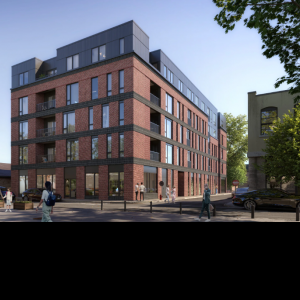Howdy
h1>
Architectural Rendering Trends in 2025
The Future Looks Bright (and Ultra-Realistic)
3D Architectural Renderings have come a long way. I remember when I started in this field —rendering took forever, and if your software crashed, well, you had time to grab a coffee, take a walk, and question your life choices. But here we are in 2025, and the game has changed. Architectural visualization in 2025 is all about speed, realism, and immersion. So let’s find out what’s trending this year!
Key Trends in 3D Architectural Renderings
1. Real-Time Rendering Becomes the Norm
Still thinking that creating rendering took hours? Well, these days when artists were waiting for hours for a single frame to be done are gone. Rendering companies are now leveraging real-time engines like Unreal Engine and Twinmotion, allowing architects and designers to tweak designs on the fly. Need to see how the sunlight hits that glass facade at 3 PM? Boom, instant visualization.
2. Hyper-Realism with AI & Machine Learning
AI is making 3D rendering in 2025 more lifelike than ever. Texture mapping, lighting adjustments, and even weather simulations are handled with a click. AI-driven render engines can now predict what a space will look like under different conditions, making design decisions easier and more informed.
3. Interactive & Immersive Presentations
Static images? So last decade. You'll probably have seen that static images go away, and videos and animation start to rule the marketing. Today’s clients expect interactive walkthroughs, animated sequences, and dynamic lighting effects. The more engaging, the better—because nobody wants to sit through a slideshow when they could be “walking” through their future space.
Tools in Architecture & Design
VR and AR in 2025 for Architectural Rendering
Virtual Reality (VR) and Augmented Reality (AR) have completely changed how we present designs. Let's go over the basics. What is VR in architectural rendering? VR (Virtual Reality) in architectural rendering is a technology that allows users to immerse themselves in a fully digital 3D environment of a design before it's built. It enables people to interact with spaces in real-time, providing a more intuitive understanding of scale, lighting, and materials. What about AR? AR (Augmented Reality) in architectural rendering overlays digital 3D models onto the real world using devices like smartphones, tablets, or AR glasses. It allows architects and clients to visualize designs in real-time within an actual space, making it easier to understand scale, proportions, and how a building or interior will fit into its surroundings. Picture this: you’re wearing AR glasses, standing in an empty lot, and suddenly—bam!—the whole building appears in front of you. That’s the power of VR and AR in architectural visualization in 2025.
Cloud-based collaboration, in other words, is a virtual workspace for the team members. It smoothed and simplified all work processes and has transformed how architects, designers, and rendering companies work together. Teams from different parts of the world can work on the same project in real-time. Plus, rendering in the cloud means less strain on your hardware—so no more frying your laptop just to preview a high-res scene.
Key Benefits:
- Real-Time Collaboration: Multiple team members can work on the same project simultaneously, reducing delays.
- Faster Rendering: Cloud-based rendering farms handle complex visualizations without overloading local computers.
- Remote Accessibility: Work from anywhere—whether you're in an office, at a client meeting, or lounging at home.
- Automatic Backups & Version Control: No more lost files or accidental overwrites. Every version is saved and accessible.
- Hardware Cost Savings: Since rendering is done on powerful cloud servers, there’s no need for expensive local hardware.
How AI Can Transform Architectural Renderings
AI isn’t just making architectural renderings faster—it’s making them smarter. With machine learning and automation, AI is revolutionizing the way we create, refine, and present 3D visualizations. Here’s a deeper dive into how AI is shaping the future of architectural rendering:
- Automated Texturing & Materials: AI can suggest materials based on the environment, reducing guesswork.
- Lighting Optimization: AI analyzes a space and automatically applies the most realistic lighting.
- Instant Post-Processing: Need a polished, cinematic look? AI-enhanced software can generate one in seconds.
- Client Feedback Integration: AI tools can interpret client preferences and adjust designs accordingly, saving time on revisions.
What’s Next?
As AI continues to evolve, expect even more groundbreaking advancements. Future AI tools might generate entire design concepts, optimize structural integrity, and even predict material costs. Architectural rendering in 2025 is no longer just about creating stunning visuals—it’s about working smarter, faster, and with greater precision.
Sustainability in Architectural Design
Eco-conscious design isn’t just trendy—it’s necessary. Architectural trends in 2025 show a strong push toward sustainable materials and energy-efficient buildings. Here’s how 3D rendering is helping:
- Simulating Energy Efficiency: Renderings can now predict energy consumption based on real-world conditions.
- Green Material Visualization: Architects can showcase sustainable materials in photorealistic detail.
- Reducing Waste: With better planning and visualization, there’s less material waste during construction.
Conclusion
If one thing is clear, it’s that architectural visualization in 2025 is more immersive, intelligent, and sustainable than ever. Whether it’s AI-enhanced realism, VR and AR experiences, or cloud-powered collaboration, the industry is evolving fast. If you’re a rendering company or an architect, staying on top of these trends is a must.
So, here’s to 2025—a year where designs don’t just look great, they feel alive. Now, if only AI could render me a coffee.



